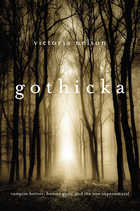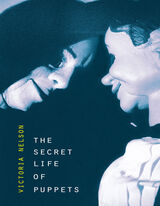
The Gothic, Romanticism's gritty older sibling, has flourished in myriad permutations since the eighteenth century. In Gothicka, Victoria Nelson identifies the revolutionary turn it has taken in the twenty-first. Today's Gothic has fashioned its monsters into heroes and its devils into angels. It is actively reviving supernaturalism in popular culture, not as an evil dimension divorced from ordinary human existence but as part of our daily lives.
To explain this millennial shift away from the traditionally dark Protestant post-Enlightenment Gothic, Nelson studies the complex arena of contemporary Gothic subgenres that take the form of novels, films, and graphic novels. She considers the work of Dan Brown and Stephenie Meyer, graphic novelists Mike Mignola and Garth Ennis, Christian writer William P. Young (author of The Shack), and filmmaker Guillermo del Toro. She considers twentieth-century Gothic masters H. P. Lovecraft, Anne Rice, and Stephen King in light of both their immediate ancestors in the eighteenth century and the original Gothic-the late medieval period from which Horace Walpole and his successors drew their inspiration.
Fictions such as the Twilight and Left Behind series do more than follow the conventions of the classic Gothic novel. They are radically reviving and reinventing the transcendental worldview that informed the West's premodern era. As Jesus becomes mortal in The Da Vinci Code and the child Ofelia becomes a goddess in Pan's Labyrinth, Nelson argues that this unprecedented mainstreaming of a spiritually driven supernaturalism is a harbinger of what a post-Christian religion in America might look like.

In one of those rare books that allows us to see the world not as we’ve never seen it before, but as we see it daily without knowing, Victoria Nelson illuminates the deep but hidden attraction the supernatural still holds for a secular mainstream culture that forced the transcendental underground and firmly displaced wonder and awe with the forces of reason, materialism, and science.
In a backward look at an era now drawing to a close, The Secret Life of Puppets describes a curious reversal in the roles of art and religion: where art and literature once took their content from religion, we came increasingly to seek religion, covertly, through art and entertainment. In a tour of Western culture that is at once exhilarating and alarming, Nelson shows us the distorted forms in which the spiritual resurfaced in high art but also, strikingly, in the mass culture of puppets, horror-fantasy literature, and cyborgs: from the works of Kleist, Poe, Musil, and Lovecraft to Philip K. Dick and virtual reality simulations. At the end of the millennium, discarding a convention of the demonized grotesque that endured three hundred years, a Demiurgic consciousness shaped in Late Antiquity is emerging anew to re-divinize the human as artists like Lars von Trier and Will Self reinvent Expressionism in forms familiar to our pre-Reformation ancestors. Here as never before, we see how pervasively but unwittingly, consuming art forms of the fantastic, we allow ourselves to believe.
READERS
Browse our collection.
PUBLISHERS
See BiblioVault's publisher services.
STUDENT SERVICES
Files for college accessibility offices.
UChicago Accessibility Resources
home | accessibility | search | about | contact us
BiblioVault ® 2001 - 2024
The University of Chicago Press









